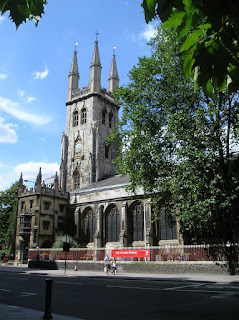Newgate Prison: For whom the bell tolled
David Ellis
THERE are few people, it seems, who haven’t got an interest these days in delving into their family history, and many are combining that interest with holiday travels to the realms of long-gone forebears.
My wife is up to her elbows in it, after discovering that her grandfather was the captain of a South Seas trading ship, the Janet Nichol that took Robert Louis Stevenson and his family from Sydney to settle in Samoa in the 1890s, and becoming a life-long friend of the Stevenson family.
And a mate recently combined his fascination with his family’s background with a wedding trip to Britain, knowing that his great, great, great, great grandfather and his family came here in 1848, fortuitously, he says, as paying passengers rather than as guests of Queen Victoria.
And he tracked down a little Anglican church, just a stone’s throw from St Paul’s Cathedral and the Old Bailey criminal courts, where that great forebear of his was baptised in 1804 – a church that bizarrely he passed almost daily on his way to his newspaper job in Fleet Street in the late 1960s, and which he never had an inkling would turn out fifty years later to have such a deep family connection.
That church is St Sepulchre-without-Newgate in London’s suburb of Holborn, and dates back to 1137. Amongst other things it is closely associated with the infamous Newgate Prison which once stood on the site of what is now the Old Bailey – its priests being regularly called upon to pray for the souls of inmates of the prison condemned to be executed.
There’s even a glass case still in the church today in which is stored the so-called Execution Bell: this handbell was taken to the prison, and rung at midnight outside the cells of those poor creatures to be hanged by the neck until dead the following morning…
And interestingly in the ground of the church is the grave of English explorer Captain John Smith, who died in a nearby house in 1631.
Smith is best known for an incident while exploring the state of Virginia in the United States in 1607: according to him, he was saved by the beautiful Indian Princess Pocahontas from being clubbed to death by her father and other warriors, throwing herself as a teenager across the Englishman and begging her father to spare the white man’s life.
It resulted in one of the world’s most famous alleged-love stories between Smith and Pocahontas, retold in gusto in a 1995 Walt Disney animated movie – but these days most historians believe it to be nothing more than the fertile imaginings of Captain Smith.
The explorer is commemorated in one of the church’s stained glass windows.
And the church, my inquisitive mate discovered, even has an Australian connection. The great diva Dame Nellie Melba, born as Helen Porter Mitchell in Victoria 150 years ago this month, is also honoured in a beautiful stained-glass window created here by renowned designer Brian Thomas, whose works also appear in St Paul’s Cathedral and Westminster Abbey.
And St Sepulchre-without-Newgate is also known as the Musicians’ Church: it was at it’s magnificent circa-1670 organ that, at the age of 14, composer and conductor Henry Wood got his introduction to music, later as we know, going on to organise the famous Promenade Concerts (“The Proms”) that still run in London every summer…
As well St Sepulchre-without-Newgate is still the venue today for regular free lunchtime recitals on that grand 300 year-old organ, while the 12 bells that still ring out from its 32m high bell-tower are those mentioned in the macabre 17th Century nursery rhyme “Oranges and Lemons.”
They’re referred to in the poem as the Bells of Old Bailey, the question “When will you pay me, say the Bells of Old Bailey” referring to the fact the Newgate Prison not only housed condemned criminals, but also many debtors as well.
But it is it’s tenor bell that has the grimmest history of all: it was the one that rang out at 9am on Monday mornings to alert the hangman to begin his gruesome task… one that was held in public, and bizarrely attracted crowds of up to 100,000 gawking spectators.
Could your forebears have been amongst them?
PHOTO CAPTIONS:
[] AUSTRALIAN connections in London’s Church of St Sepulchre-without-Newgate.
[] ELABORATE interior of the historic church.
[] DETAILED stained glass window commemorating Australian diva Dame Nellie Melba (lower centre.)
[] GRIM reminder of past history: the Execution Bell is still housed in the Church today.
[] CONTEMPORARY painting of Pocahontas “saving” Captain Smith.
Photos: Anglican Church Library; Malcolm Andrews; Frank Lin.
Originally for 16 MAY 2011







You must be logged in to post a comment Login